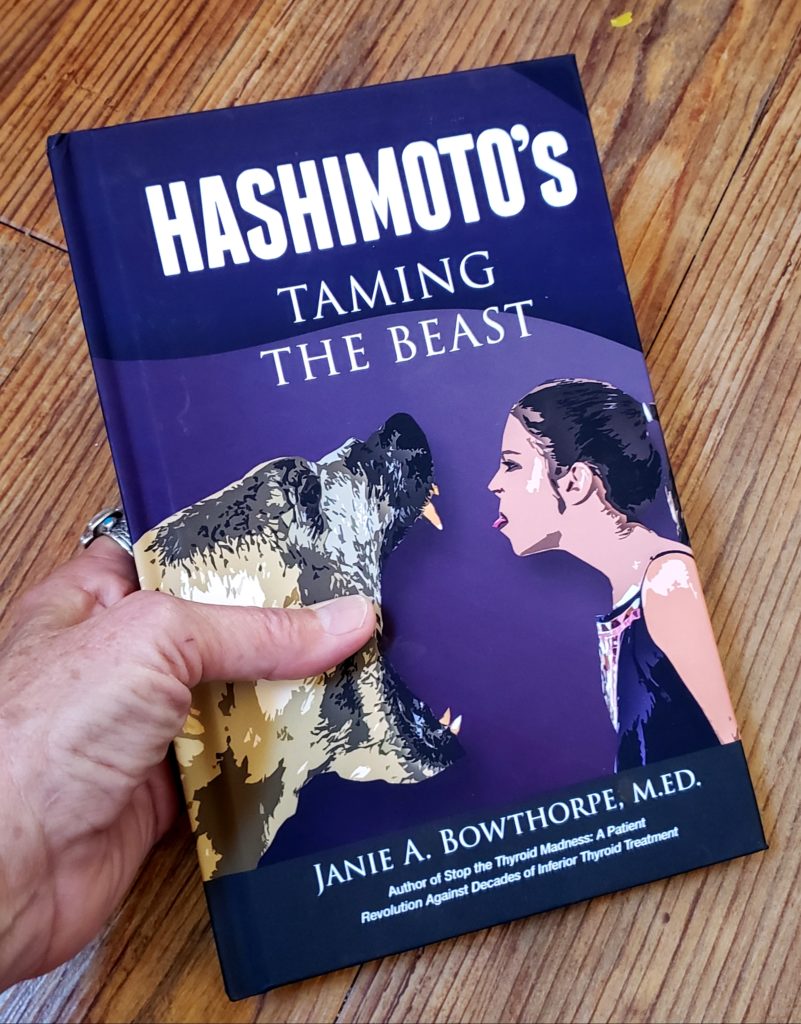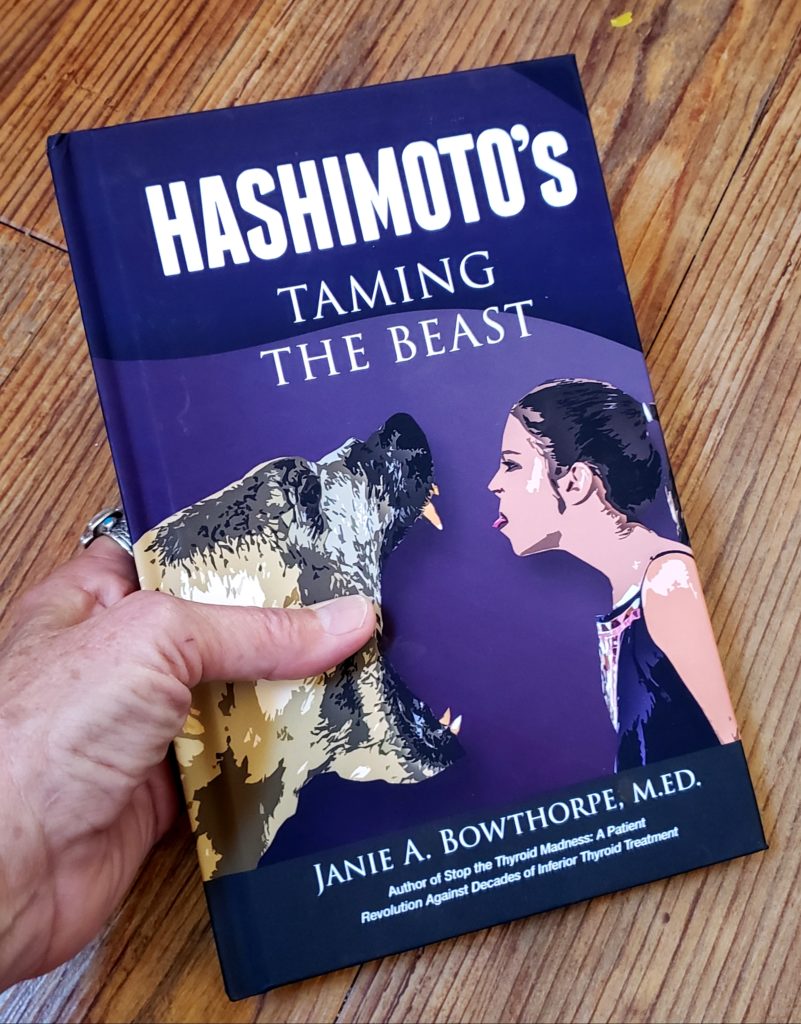
Low dose Naltrexone (LDN) has been a godsend for many Hashimoto’s Thyroiditis patients in improving the overreactive immune system. It also helps lower inflammation whether one has Hashi’s or not.
What is the “Naltrexone” part of LDN?
Originally, the drug “Naltrexone” in a full dose (as compared low dose naltrexone / LDN) was an FDA-approved medication from the mid-1980’s. It was created to help alcoholics and drug addicts free themselves from their addiction. How it worked was by raising serotonin levels so they didn’t miss the alcohol and drugs they once derived pleasure from. Thus, it helped withdrawal symptoms at a dose of 50 mg per day. It’s still used for that purpose today!
What about “Low Dose” Naltrexone?
With a year after the creation of Naltrexone, it was discovered that a low dose, called Low Dose Naltrexone, could improve one’s immune function. And especially important, it could balance out an over-reactive immune system. How? By lowering the overreactive Th-17 cells, which promote your autoimmunity issues.
So LDN is especially good for Thyroiditis/Hashimoto’s patients?

It certainly has been! Even the book Hashimoto’s: Taming the Beast mentions it a lot.
Because LDN can modulate and balance out an over-reactive immune system, there are many Hashimoto’s patients who report it was the reason their stubborn antibodies came down. This success is also true for those with Hashitoxicosis–the combination of Hashi’s and Graves (TPO) antibodies.
LDN has also become known as potentially beneficial for those with cancer, MS (Multiple Sclerosis), Crohn’s, Lupus, as well as HIV/AIDS and central nervous system disorders. Besides improving endorphin production which can be the cause of many disease, low dose naltrexone can also help reduce inflammation. LDN can also decrease the contraction of the muscles in your GI tract, especially after opioid use, thus improving healing, says literature. It has also shown to reduce the pain of Rheumatoid Arthritis!
How do autoimmune thyroid patients use LDN?
This is very individual. Many thyroid patients start at 1.5 mg, holding for several weeks, then very slowly raising to a maximum of 4.5 mg, taken before bedtime. But others may only start on .5 mg.
Maximum doses vary, from 2.5 or 3 mg to see its benefits without side effects. Others see it at 4.5 without side effects. Some go up even higher. What are side effects showing a dose may be too high for someone? They got insomnia, headaches or increased fatigue when trying to go higher. Some find benefits from skipping doses here or there. Again, it’s very individual.
Some report it can take months to see the benefits, so giving it a trial of up to six months minimum seems to be a common recommendation. The lowering of antibodies is very common!
You can get LDN by prescription from your doctor via a compounding pharmacy. It’s often mixed with Microcrystalline cellulose as a filler. Talk to the pharmacist if that’s a problem. Some will get the pills via their doctor and make their own liquid version (explained below on youtube link).
NOTE: Usually when a patient starts LDN, especially with Hashi’s, they find they need to slightly reduce their thyroid hormone medications. It was once thought that they could eliminate needing any thyroid medication at all, but that hasn’t been the case for most.
How do I make Low Dose Naltrexone?
Here’s a video on to use the 50 mg Naltrexone tablet and turn it into Low Dose Naltrexone: http://www.youtube.com/watch?v=bOekLFlvR7l Or via a prescription from your doctor, there are now many local pharmacies which can compound it for you. But you do want to underscore that you do NOT want slow-release. If you scroll down 2/3rds of this page, you can see a boxed list of a few pharmacies which the LDN website says are very reliable.
Is LDN mentioned in the patient-to-patient book Hashimoto’s: Taming the Beast?
Definitely yes, and you will see it used successfully by many patients within the 96 testimonies as well as other strategies in lowering antibodies. Unlike other Hashi’s books, this version avoids long, drawn-out stories and chit chat to make it easier for you to get through it. Each chapter also has a NOTES page afterwards just for you.

Are there side effects in using LDN?
Some patients report they have very vivid dreaming the first week or so, then they go away. Or some get these vivid dreaming as they move up, but again, it eventually goes away for most. If those vivid dreams continue, patients start taking their LDN in the morning rather than before bedtime. Some patients have reported insomnia–they go back down if that occurs. Others have reported depression, increased fatigue, headaches, but they aren’t common.
Can I take it while pregnant?
According to a variety of patient reports who were pregnant, there do not appear to be any problems with taking it while pregnant nor when breast feeding. The LDN Research Trust even states that “LDN exposed babies are often healthier than those whose mothers did not take LDN during pregnancy.” Work with your doctor on this, though, because we can never say what’s right for you!
Do I have to be on it for life?
Informed patients with a tendency to have autoimmune issues have chosen to do so. But you decide for you in working with your doctor.
What do others say about LDN?
From Dr. Mercola:
In the case of …
- …systemic infections such as HIV/AIDS or Lyme, LDN boosts the immune system, helping the body fight off the invading pathogens.
- …cancers such as multiple myeloma and neuroblastoma, LDN inhibits proliferation of malignant cells.
- …autoimmune diseases such a Multiple Sclerosis, LDN takes an aberrant immune system and helps restore it to normalcy.
- Here’s a detailed article on all the issues LDN can improve, including Alzheimer’s.
- Here’s a great article about LDN from genetic lifehacks.
Does LDN help other conditions?
Yes! Here’s a concise article from the LDN Research Trust about all the conditions that LDN can help. It even mentions SIBO (small intestinal bacterial overgrowth), many autoimmune conditions besides Hashimoto’s, and sleep issues.
More LDN resources:
https://www.ldnscience.org/ LDNscience.org is a public information project of the MedInsight® Research Institute (a U.S./U.K. based non-profit organization which serves as a platform for researching and indexing available off-label (repurposed) treatments for cancer and chronic diseases.) Since its founding in 2009, LDNscience® has grown into the most comprehensive resource of LDN information for both physicians and LDN users. The site indexes all the published trials and research about LDN, interviews with doctors and patients, a comprehensive Q&A section, patient stories, a worldwide database of LDN prescribing doctors, and more.
Here’s a Facebook group to talk LDN–note that they prefer you to be using it via prescription, so if you are not, might not want to say so.
http://www.ncbi.nlm.nih.gov/pmc/articles/PMC3962576/ This article talks about LDN use for inflammation.
Have more to add to his page? Use the Contact below.
Important notes: All the information on this website is copyrighted. STTM is an information-only site based on what many patients worldwide have reported in their treatment and wisdom over the years. This is not to be taken as personal medical advice, nor to replace a relationship with your doctor. By reading this information-only website, you take full responsibility for what you choose to do with the information on STTM or its outcomes. See the Disclaimer and Terms of Use.